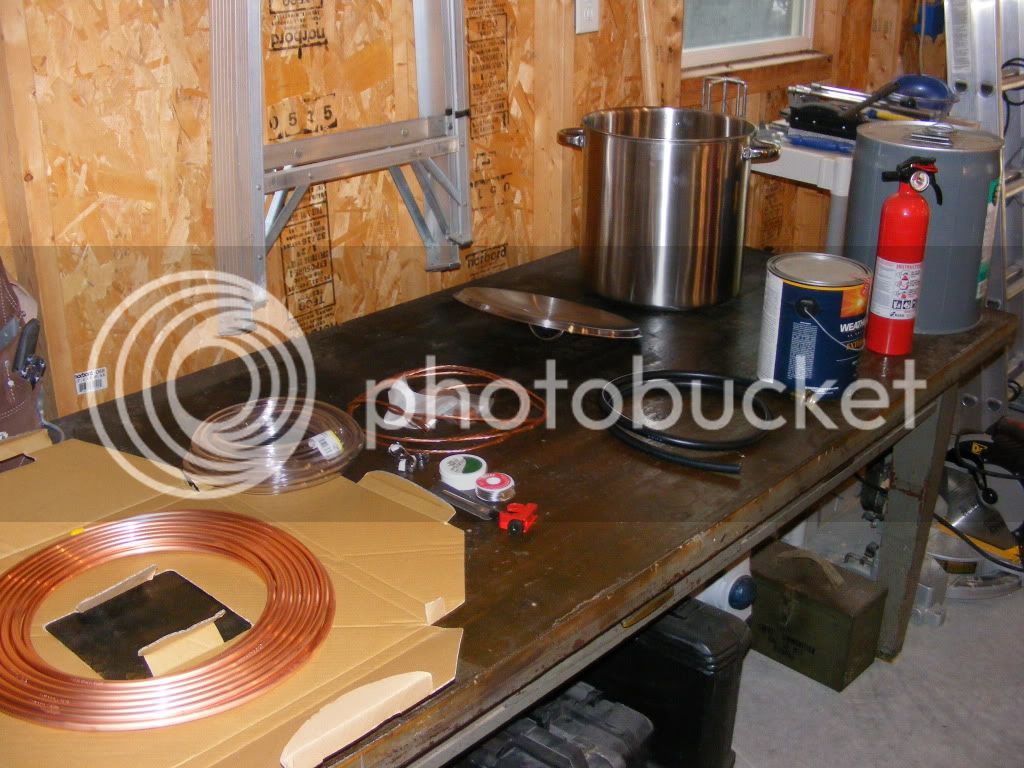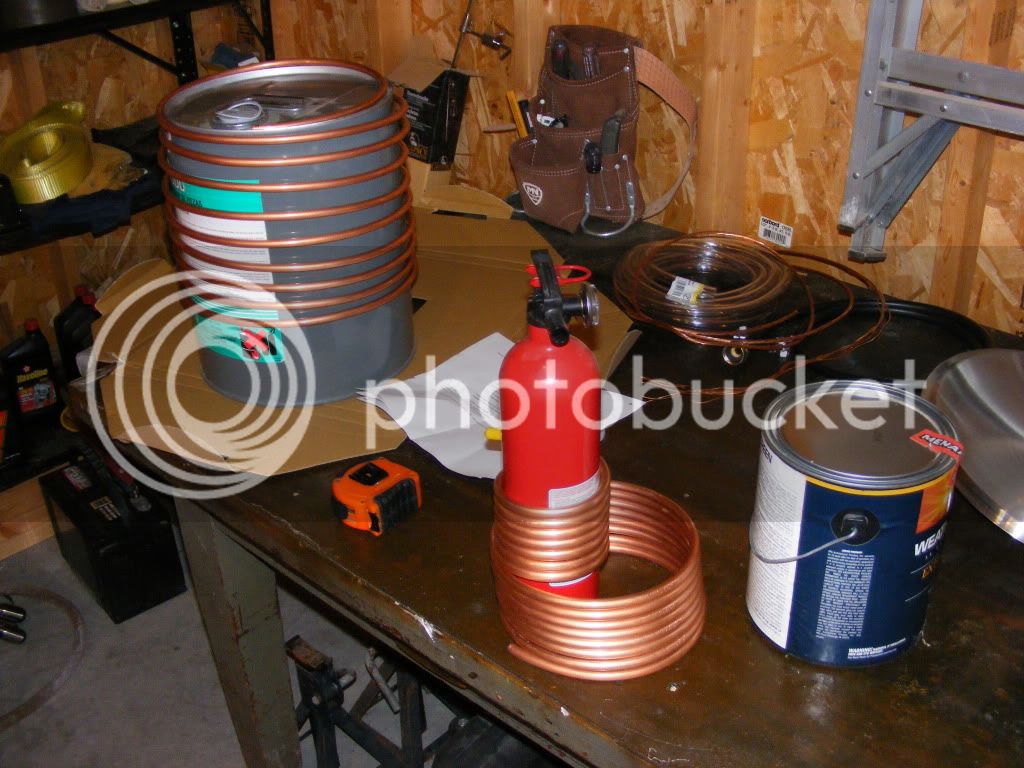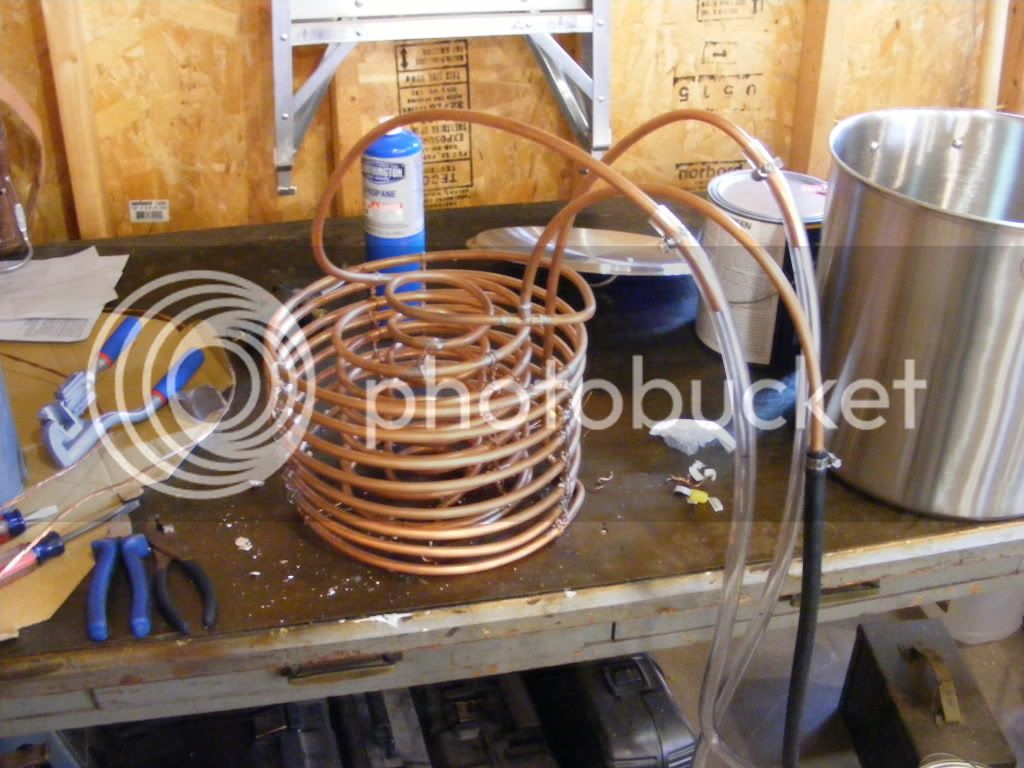Lucky_Chicken
Well-Known Member
So a friend of mine and I were looking at the wort chillers and thought 30 min was a long time to cool it off (we cool off 1000 lb-ft desil engines with 100 degree air in no time). So... we designed and built this. It cools 5 gallon boils down to ~60 in just under 7 minutes. Not sure if that is good for the beer or not but it sure causes a lot of junk to drop out of solution and so far the beers have been good that I've used it with.
What I started with:

Coils:

I wove solid copper wire and soldered the joints to make it stiffer... worked like a charm. After a couple boiling water baths to get it clean we were in business!

What I started with:

Coils:

I wove solid copper wire and soldered the joints to make it stiffer... worked like a charm. After a couple boiling water baths to get it clean we were in business!




